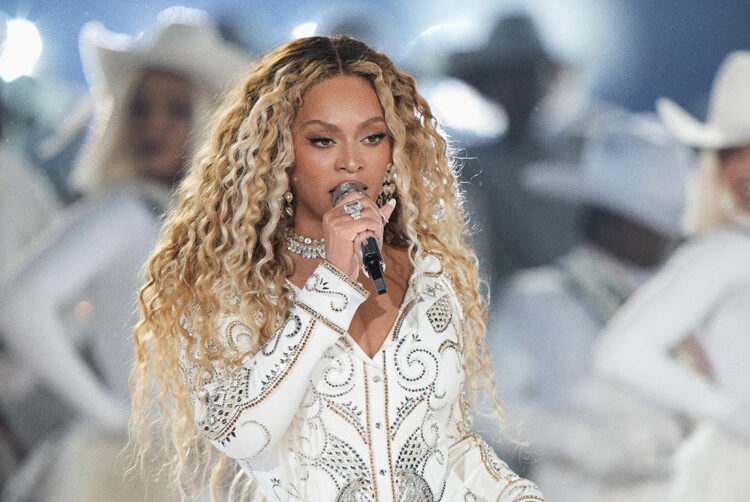Advertisers can score big with live sports streaming

Opinion
Streamers are reinventing the playbook for live sports coverage, so brands need to think beyond traditional advertising formats and look at the wider entertainment experience for consumers.
Live sports coverage is changing. Broadcasters and streamers both now compete to air the world’s biggest and best competitions.
ESPN — the traditional sports broadcaster used by millions of sports fans across the globe via cable — has recently been integrated into Disney+. The platform has also been experimenting with real-time animated sports coverage, turning NFL players into characters from The Simpsons to attract younger viewers to its Funday Night Football coverage.
And the first week of January saw WWE Raw, a juggernaut in the world of sports entertainment, make its debut on Netflix.
There have been plans for even bigger live streaming ventures too. Just last week, Venu Sports — a highly anticipated collaboration between Fox, Warner Bros Discovery and Disney — was scrapped.
These significant moves show that the live sports streaming landscape is in flux. Streaming is becoming a cornerstone of sports viewing alongside traditional broadcast channels.
With sports one of the key bastions of live TV, advertisers have an opportunity to reassess how they engage with sports viewers as new entrants disrupt the landscape.
Best of both worlds
For many brands, the introduction of live sports to streaming platforms is an opportunity to welcome different audiences to become superfans.
Take football. Today, 83.3% of Premier League supporters are male and 62.8% aged over 46. However, efforts from across the spectrum mean more women and young people are being pulled into the sport, shifting the demographic.
Similar developments can be seen in motorsport, where Netflix’s Formula 1: Drive to Survive has helped attract more diverse viewers to the sport, with the amount of female fans increasing by 8% between 2017 and 2022, and the average age of a fan dropping by four years.
Meanwhile, streaming services have become a cornerstone of entertainment. With 68.8% of Brits subscribing to at least one platform, they are well-placed to provide additional access points for new fans to get into the action.
This creates a new sweet spot between sports, entertainment and culture, enabling deeper alignment with teams, talent and fan communities across both spaces.
Netflix tapped into this with its NFL Christmas game day, featuring a half-time performance by Beyoncé. While half-time shows are not new, Netflix turned the performance into a dazzling entertainment spectacle that transcended traditional sports viewership, drawing over 30m global viewers.
This combination of live global event meets entertainment extravaganza feels like a formula that streamers can tap into.
For brands, it presents an attractive opportunity to play a role in shaping these shared cultural moments.
Getting involved
In the past couple of years, streamers like Netflix have grown their reputation as a credible platform for big global brands to cement their premium credentials through high-level partnerships, like Coca-Cola with Stranger Things and McDonald’s with Emily in Paris.
With live sports, the playing field is less mature, but with a lot of potential for innovative sponsorship models, cutting-edge tech collaborations and partnerships built around the talent that expand outside live sports.
However, when planning their media strategy, brands must accept that it’s a different landscape compared with traditional sports broadcasting.
As new platforms establish themselves, reach can be challenging to predict. Tent-pole events such as Jake Paul vs Mike Tyson or Christmas Day NFL will always equal ratings success. But for UK markets, WWE on Netflix or Uefa Champions League on Amazon Prime Video are a long way off matching the audiences key England games attract for ITV or the biggest Premier League fixtures do for Sky.
In a similar vein, innovations like animated games will not yet rival the mass-market reach of major broadcasters — but they do broaden the appeal to younger, growth audiences not currently served by the traditional broadcast approach.
As Netflix made clear recently, streamers are reinventing the playbook for live sports coverage. They are motivated by creating a cultural and entertainment moment that adds new value to growth audiences instead of simply broadcasting a sport.
That’s why it’s vital that brands look past simple, short-term reach and value calculations, and focus on understanding the signalling strength and competitive edge that come from partnering new and emerging opportunities. Brands need to think beyond traditional advertising formats and look at the wider entertainment experience for consumers, constantly pushing for ways to immerse themselves in the action to deliver more value.
There are some great examples of this, like the long-term partnership between Audi and Sky Sports, but there is plenty of room for innovation.
NBA rights deal highlights importance of live sports and impact of streaming
Untapped potential
Live streaming is quickly establishing itself as a viable addition to live sports coverage. The recent news of Dazn securing the broadcasting rights to the 2025 Fifa Club World Cup is testament to this.
However, it is also still in its infancy and that comes with certain risks. Traditional broadcast sports are embedded in decades of assurance and expertise, but with streaming some level of uncertainty is inevitable.
That said, the execution of recent events like the NFL Christmas games demonstrates that lessons are learned quickly and platforms are adapting rapidly to meet audience and advertiser expectations.
As fan demographics shift, there is plenty of room for traditional broadcasters and streamers to share the space, and for advertisers to drive fresh innovation.
Fortune favours the brave. This new frontier of sports and entertainment invites brands to redefine fan experiences and refine the future of how we enjoy live sports.
 Dan Wood is managing director, Creative Futures UK, at EssenceMediacom
Dan Wood is managing director, Creative Futures UK, at EssenceMediacom




